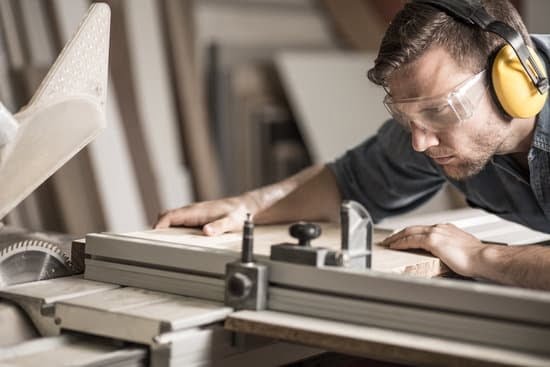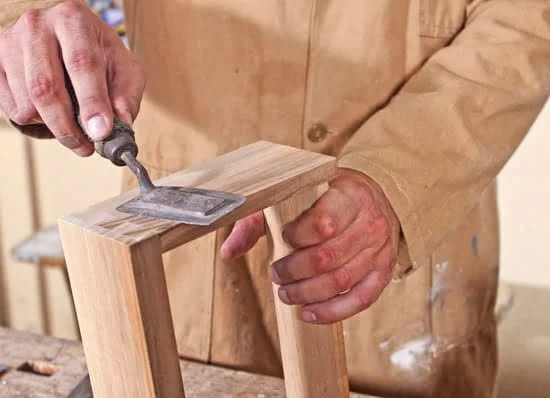Are you looking to take your woodworking projects to the next level? Woodworking clamps are an essential tool for any woodworker, allowing you to securely hold pieces together while gluing, nailing, or screwing. In this article, we will explore how to use woodworking clamps effectively, covering the different types of clamps, how to choose the right one for your project, and step-by-step guides on using various types of clamps.
Woodworking clamps come in a variety of shapes and sizes, each serving a specific purpose in the workshop. Whether you are a beginner or a seasoned woodworker, understanding the different types of clamps available will help you achieve professional results in your projects. From bar clamps to spring clamps to C-clamps, we will discuss their uses and applications in detail.
Choosing the right woodworking clamp for your project is crucial to its success. We will provide you with expert advice on selecting the appropriate clamp based on your specific woodworking task. Additionally, we will share tips on how to use these clamps effectively and creatively in various woodworking projects. So let’s delve into the world of woodworking clamps and discover how these versatile tools can elevate your craftsmanship.
Different Types of Woodworking Clamps
Woodworking clamps come in a variety of types, each designed for specific tasks and projects. Understanding the different types of woodworking clamps available will help you choose the right one for your project and ensure that you achieve the best results.
One of the most common types of woodworking clamps is the bar clamp. It consists of a long bar with adjustable clamping jaws at each end. This type of clamp is versatile and useful for a wide range of woodworking projects, including gluing, clamping panels, and securing workpieces during assembly. To use a bar clamp, simply slide the adjustable jaw to the desired position, place it over the workpiece, and then tighten the handle to secure it in place.
Another popular type of woodworking clamp is the spring clamp. These clamps feature a simple design with fixed jaws and a spring mechanism that provides constant pressure when gripping onto the workpiece. Spring clamps are easy to use and are ideal for holding smaller or lightweight materials together during gluing or finishing processes. To use a spring clamp, simply squeeze the handles together to open the jaws, position it over the workpiece, and release the handles to apply pressure.
Finally, C-clamps are another essential type of woodworking clamp that can be used for a variety of tasks. These clamps have a C-shaped frame with an adjustable screw mechanism for tightening or loosening the grip on a workpiece.
C-clamps are particularly useful for securing heavy or bulky materials in place while performing tasks such as drilling, sawing, or sanding. To use a C-clamp, adjust the screw to open the jaws wide enough to fit over the workpiece, position it in place, and then turn the screw handle clockwise to tighten the grip securely.
By understanding how to use woodworking clamps effectively based on their types, you can select and utilize these essential tools with confidence in your woodworking projects. Whether you are working on small-scale home DIY projects or larger professional endeavors, mastering these techniques will help you achieve precision and stability in your work.
How to Choose the Right Woodworking Clamp for Your Project
Woodworking clamps are essential tools for any woodworking project. They come in various types and sizes, each designed for specific tasks. Choosing the right woodworking clamp for your project can make a significant difference in the quality of your work. Here are some guidelines on how to select the right woodworking clamp for your project.
Consider Your Project Needs
Before choosing a woodworking clamp, consider the specific requirements of your project. For instance, if you are working on a large-scale project such as furniture making, you may need heavy-duty clamps like bar clamps or pipe clamps. On the other hand, smaller projects like crafting or model-making may require smaller clamps such as spring clamps or hand screws.
Understand the Different Types of Clamps
Familiarize yourself with the various types of woodworking clamps available in the market. Each type serves specific purposes and offers distinct benefits. For example, parallel-jaw bar clamps are excellent for providing even pressure along the length of the workpiece, while quick-grip clamps are convenient for one-handed operation.
Quality and Durability
When choosing a woodworking clamp, prioritize quality and durability over price. Investing in high-quality clamps will ensure that they last longer and provide reliable performance. Look for features such as sturdy construction, ergonomic handles, and smooth operation when selecting woodworking clamps.
By understanding your project needs, familiarizing yourself with different types of clamps, and prioritizing quality and durability, you can choose the right woodworking clamp for your project effectively. Understanding these factors will enable you to make informed decisions when selecting the appropriate clamp for your woodworking endeavors.
Step-by-Step Guide on Using Bar Clamps in Woodworking
Woodworking clamps are essential tools for any woodworking project, and bar clamps are among the most versatile and commonly used types of clamps. Whether you’re gluing pieces of wood together, holding them in place while drilling, or securing them for sanding, bar clamps are a go-to tool in any woodworker’s arsenal.
Step-by-Step Guide on Using Bar Clamps
If you’re new to woodworking or simply looking to refresh your knowledge on how to use bar clamps effectively, follow these steps:
- First, choose the right size and type of bar clamp for your project. Consider the length and depth of the materials you’ll be working with, as well as the pressure needed to hold them securely.
- Before using a bar clamp, make sure the surfaces you’ll be clamping together are clean and free from debris. This will ensure a strong and secure bond when applying pressure.
- Position the pieces of wood you want to clamp together and align them properly. Once aligned, place the fixed jaw (stationary end) of the clamp against one piece of wood and the sliding jaw (movable end) against the other.
- Turn the handle on the sliding jaw clockwise to apply pressure until the pieces are firmly held together. Be careful not to over-tighten as this may damage your workpieces.
- Once your work is complete, release the pressure by turning the handle counterclockwise. Remove the bar clamp carefully without disturbing your project.
By following these steps, you can ensure that you’re using bar clamps effectively in your woodworking projects and achieving professional-quality results.
Tips for Using Spring Clamps Effectively
When it comes to woodworking, spring clamps are incredibly versatile and useful tools. They are commonly used to hold pieces of wood together while glue dries, but they can also be used for a variety of other tasks in the workshop. In this section, we will explore some tips for using spring clamps effectively.
Choosing the Right Size and Strength
One of the most important things to consider when using spring clamps is choosing the right size and strength for your project. Spring clamps come in a variety of sizes and strengths, so it’s important to use the appropriate clamp for the job. If you’re working with thicker or heavier pieces of wood, you’ll need a stronger clamp to ensure a secure hold.
Proper Placement and Pressure
When using spring clamps, it’s important to place them in the right position on your workpiece. Make sure the clamp is positioned close to the joint or edge that needs to be held together. Additionally, apply even pressure on the clamp handles to ensure a secure grip without damaging the wood.
Using Multiple Clamps
In many woodworking projects, you may find that one spring clamp is not enough to hold everything together securely. In such cases, don’t hesitate to use multiple clamps to distribute pressure evenly across the workpiece. This will help prevent any misalignment or slipping during gluing or assembly.
By following these tips and understanding how to use woodworking clamps effectively, you can improve the quality and efficiency of your woodworking projects while ensuring safety in your workshop.
Creative Ways to Use C-Clamps in Woodworking Projects
C-Clamps are a versatile tool that can be used in a variety of creative ways in woodworking projects. These clamps feature a C-shaped frame with a screw mechanism that allows for easy adjustment and secure gripping. Here are some innovative ways to use C-clamps in your woodworking projects.
One creative way to use C-clamps is for creating custom-sized stop blocks for cutting multiple pieces of wood to the same length. Simply clamp a piece of scrap wood to the desired distance from the blade, and use it as a guide for each subsequent cut. This ensures consistent and accurate cuts without the need for precise measurements each time.
Another useful application of C-clamps is for gluing up panels or boards. By using multiple C-clamps along the edges of the boards, you can apply even pressure across the entire glued joint, ensuring a strong bond between the pieces. Additionally, C-clamps can be used in conjunction with cauls to prevent bowing or warping during the clamping process.
C-clamps can also be utilized for holding workpieces securely in place while routing, sanding, or carving. By attaching the clamp to your workbench and using it as a makeshift vise, you can free up both hands to focus on the task at hand without worrying about slippage or movement. Additionally, C-clamps can be paired with scrap wood blocks to create custom jigs for unique shaping or cutting tasks.
By learning how to use woodworking clamps creatively, you can enhance your project outcomes and expand your capabilities as a woodworker. With these tips and techniques, you will be able to make the most out of these simple yet invaluable tools in your woodworking endeavors.
Common Mistakes to Avoid When Using Woodworking Clamps
Woodworking clamps are essential tools for any woodworking project, but using them incorrectly can lead to wasted time, damaged wood, and even personal injury. To ensure that your woodworking clamps are being used effectively and safely, it’s important to be aware of common mistakes to avoid.
One common mistake when using woodworking clamps is over-tightening them. While it’s natural to want a strong grip on the wood, over-tightening can actually cause the wood to warp or crack. It’s important to find the right balance between a secure hold and applying too much pressure.
Another mistake is not using the correct type of clamp for the specific project at hand. Each type of woodworking clamp has its own set of uses and limitations, so it’s crucial to select the right one for your needs. For example, attempting to use a spring clamp for heavy-duty projects can lead to frustration and inefficiency.
Finally, failing to properly position the clamps can also lead to mistakes. It’s important to take the time to carefully plan out where each clamp will be placed in order to achieve an even pressure distribution across the wood.
| Common Mistake | Effect |
|---|---|
| Over-tightening | Can cause wood to warp or crack |
| Using incorrect type of clamp | Can lead to inefficiency and frustration |
| Improper positioning of clamps | Uneven pressure distribution across the wood |
Safety Precautions and Best Practices for Using Woodworking Clamps
When working with woodworking clamps, it is important to always prioritize safety. One of the most important safety precautions when using woodworking clamps is to ensure that you are using the right type and size of clamp for your specific project. Using undersized or incorrect clamps can result in accidents and damage to your workpieces.
Another best practice when using woodworking clamps is to regularly inspect them for any signs of wear and tear. Check for bent or damaged components, as well as rust or corrosion, which can weaken the integrity of the clamp. It’s crucial to only use clamps that are in good working condition to ensure both your safety and the quality of your woodworking projects.
Additionally, always make sure that the clamping pressure is applied evenly across the entire surface of the workpiece. Uneven pressure can lead to warping or damage to the wood. Take your time to set up and adjust the clamps properly before tightening them down.
Lastly, never leave sharp tools or loose materials on a workbench where they could potentially interfere with your use of woodworking clamps. Keep your work area clean and organized to prevent accidents and ensure smooth operation while using clamps.
| Safety Precautions | Best Practices |
|---|---|
| Use correct type and size of clamp | Regularly inspect clamps for wear and tear |
| Apply even pressure across workpiece | Keep work area clean and organized |
By following these safety precautions and best practices, you can effectively utilize woodworking clamps while minimizing the risk of accidents or damage to your projects. Always prioritize safety when working with tools in any woodworking project.
Conclusion and Final Tips for Mastering Woodworking Clamps
In conclusion, woodworking clamps are an essential tool for any woodworker, whether you are a beginner or an experienced professional. With the wide variety of clamps available, it’s important to understand the different types and how to use them effectively in your projects.
By following the step-by-step guide on using bar clamps, tips for spring clamps, and creative ways to use C-clamps provided in this article, you can enhance your woodworking skills and create high-quality projects.
When choosing the right woodworking clamp for your project, consider factors such as the size of the project, the type of wood being used, and the specific task at hand. It’s important to always select sturdy and reliable clamps that can provide sufficient pressure without damaging the wood. By avoiding common mistakes such as over-tightening clamps or using incorrect clamp types for a particular application, you can ensure a successful outcome for your woodworking project.
Lastly, safety precautions and best practices should always be followed when using woodworking clamps. This includes wearing appropriate safety gear such as gloves and safety goggles, as well as being mindful of where you place your hands when working with clamps.
Always make sure to secure the workpiece properly before applying pressure with a clamp to avoid accidents or injuries. By mastering how to use woodworking clamps effectively and safely, you can elevate the quality of your woodworking projects and achieve professional results.

Hi everyone! I’m a woodworker and blogger, and this is my woodworking blog. In my blog, I share tips and tricks for woodworkers of all skill levels, as well as project ideas that you can try yourself.





